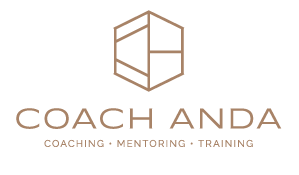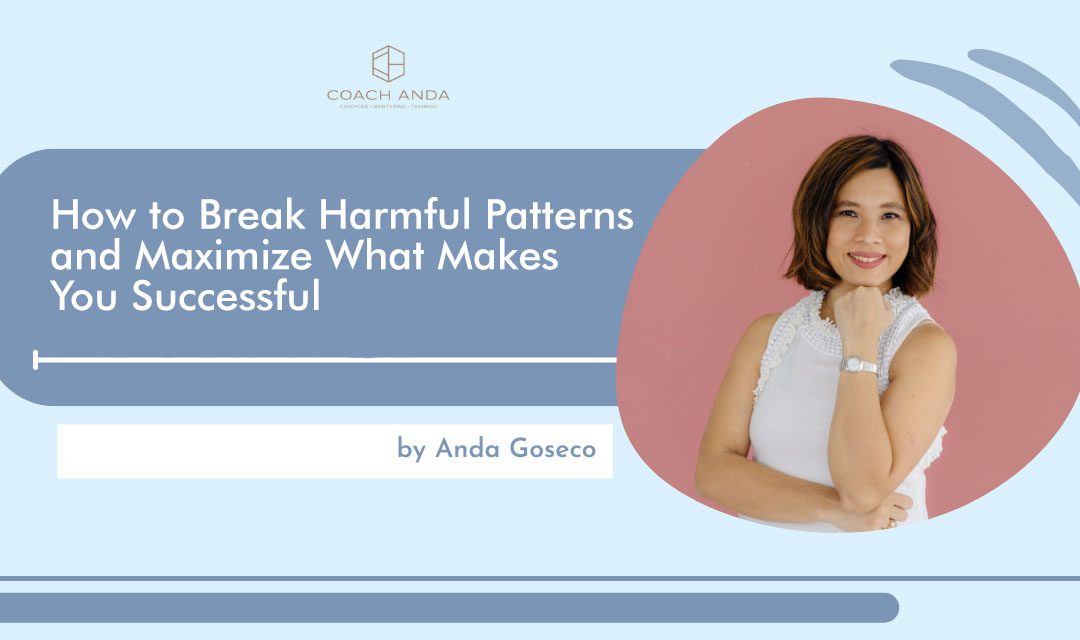“It is easier to manage our external environment when we understand how we think and respond to the environment around us. Breaking bad patterns and focusing on the good ones make us change the outcome.” – Coach Anda
Do you feel like you’re stuck in specific patterns? Some things keep happening to you, and you can’t help but wonder why and why you.
Most of our decisions are subconscious, of which we are unaware. False assumptions from our past can trigger these subconscious, split-second judgments. And so we notice patterns in our lives repeating themselves and are unsure how to stop them.
The Iceberg
I always like to use the iceberg as an example of how sometimes we do not see why things keep happening.
When a boat passes an iceberg, it only sees the top. The whole iceberg is seen when you dive deep, and there’s a bottom part, so it’s bigger than you think.
And the similar thing is that sometimes we see ourselves as just at the top of the iceberg. Let’s say there is a problem. You’re angry at someone. If you’re angry at someone, there’s a pattern that’s happening there. The person you’re angry at is just a result of something deeper.
There are a lot of things happening underneath. And so when you dig deeper to go to that example of that person you’re upset with, you have to find out the situations where you find yourself angry with this type of person.
To do this, you ask these questions:
- What is the profile of this person?
- What about this person triggers me to react a certain way?
- Are there similar situations with other people that I’ve talked to where it got me to react a certain way?
- How do I feel when I speak to this person?
If you say you feel angry or upset, or irritated with this person, ask yourself where you think it’s coming from and what belief you have in your mind.
In this scenario, when you talk to this person and feel like they are powerful and you find them insulting, you think you’re being attacked, so you have to fight back.
That line you carry with you all the time can be a blanket statement you use for anyone who attacks you that way. What you need to do is to go back in time and find out when did that belief start happening.
You can often find yourself thinking that way from childhood, work, or experience with certain people, and then you form a conclusion about the world.
But sometimes, the conclusions we have about the world are inaccurate because they are blanket statements about things that heighten our emotions and make us angry, sad, and frustrated, and that’s why we have created our view of the world that way.
You’ve created a statement that these people are out to get you, are not fair, or will not respect you.
It could also come from childhood, like an experience with one of your parents, a sibling, a friend, or maybe at work. Some bosses made you feel that way, or some peers, or even team members.
So those are the patterns that come out. And when you experience all of that, you should ask yourself, “IS IT TRUE”? “Is it true that everyone I talk to who has that profile is out to get me?”
And when you think about it, maybe they’re not out to get you. It’s not true. What you did there was uncovered the pattern. You’ve uncovered the bottom of the iceberg.
The real problem was that you’ve carried this belief with you, or maybe also this value of standing up for yourself or having courage. Still, perhaps it can also be seen in a twisted way where you find yourself very defensive, and it’s not good for relationships.
How do you break the pattern?
I have always been a pattern breaker. I like to decode people and unlock patterns.
Uncovering patterns is similar to solving a Rubik’s cube. It doesn’t look very clear at the start. When the colors are aligned, then you have solved the puzzle. Everything becomes clear because you know the pattern.
The key is to know the formula to uncover your patterns. Using this formula will help you break harmful patterns and maximize what makes you successful.
Sometimes it is our triggers that make us decide the wrong way. Our emotional state can affect the results. You need to be calm and ask yourself the right questions.
Focus on what is true and makes sense. You will know when it is the right decision when you experience peace and alignment.
Recognize the story in your head.
What is the story that you tell yourself all the time, every time this happens? Recognize that it doesn’t happen all the time.
And so you need to change it to a new story and tell yourself that in situations like this, “I should hear the person out. I should ask them and clarify what they meant. I should not jump to conclusions. I should be more open.”
So a simpler way of putting that all together in a coaching session, I tell people to come up with one word, two words, or a simple sentence. The one word can be “be open or be curious.” That can stop or break the pattern.
That’s the importance of looking at what’s underneath. Because if you only stop with an outer part, like you’re angry at that person, then it won’t solve the problem. It’ll keep on happening.
But if you’re able to understand what caused it and to debunk maybe some of your belief systems, which is the bottom of the iceberg, you’ll have a better outcome. So the better result would be you’d be more open, reach out to that person, not pass judgment, and have a more collaborative relationship with that other person.
It’s essential to be able to name what that is. Name what the problem is. Name where it’s coming from. Then once you name it, you have a hold on it. But if you don’t name it, you don’t have any holding in it at all.
Here are some simple steps to follow to summarize the process of breaking the pattern.
- Take note of the problem.
- Ask yourself what’s happening underneath. “What do I tell myself every time I see this person, and what’s the effect of that?”
- Know where the problem is coming from and understand the story you’re telling yourself.
- Ask yourself, “Is this belief true for everything or just for certain things?” And most of the time, you’ll see that it’s pointed to just isolated cases because something big happened before you have a big line in your head telling you what that is.
So you need to know the patterns, and then after you find the patterns, you change the story with a new story. That’s where our mind works. You change the story in your head, and the outcome becomes different.
Put a line, a word, or a phrase that’ll change the outcome. In the end, you have a better result, and you have a better understanding of yourself. You’re able to watch yourself when those patterns and those environments are there for you, and you’re more prepared for it.
You have to be motivated to want to change the patterns. If you see the more significant value and realize that it’s affecting a lot of things, then you have to create habits to change that pattern every day consciously.
“With the same habits, you’ll end up with the same results. But with better habits, anything is possible.” – James Clear

